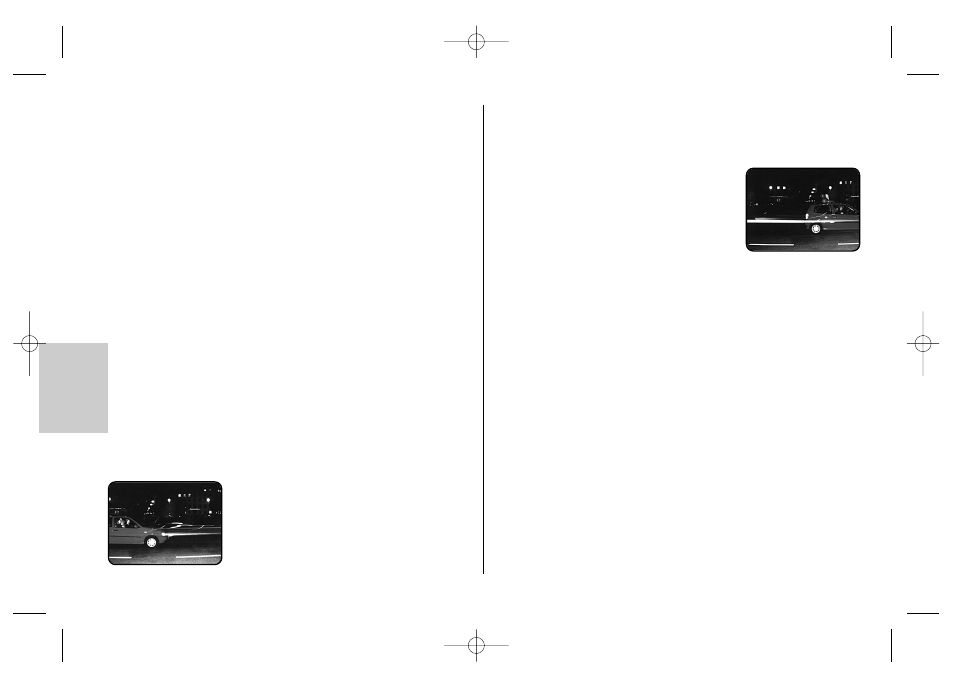Metz MECABLITZ 58 AF-2 digital Nikon User Manual
Page 140

ķ
17 Flash exposure memory
Some Group E cameras (see Table 1) have flash exposure memory (FV memo-
ry). This is supported by the flash unit in i-TTL flash mode. It can be used to defi-
ne and store the exposure level for the subsequent shot before the shot is actual-
ly taken. This can be useful when, for example, the flash exposure has to be
adjusted to specific details that may not necessarily be identical with the main
subject.
This function is activated on the camera, in some instances as an individual
function. The subject detail to which the flash exposure is to be adjusted is sigh-
ted and brought into focus with the AF sensor/metering window in the camera.
When the AE-L/AF-L button (the terminology may vary with the camera model)
on the camera is pressed, the flash unit fires a test flash. The stored metering
value (e.g., „EL“) is then displayed in the camera viewfinder. The camera uses
the reflected light of the test flash to determine the light output required for the
subsequent exposure. The actual main subject can then be brought into focus
with the camera’s AF sensor/metering window. When the shutter release is
pressed, the picture will be exposed with the previously defined light output of
the flash unit.
For more detailed information on adjustments and handling, refer to the
camera’s operating instructions.
18 Flash synchronisation
18.1 Normal synchronisation
In normal synchronisation the flash unit is triggered at the beginning of the shut-
ter time (first curtain synchronisation). Normal synchronisation is the standard
mode on all cameras. It is suitable for most flash shots.
The camera, depending on the mode being used, is
switched to the flash sync speed. Speeds between
1/30 sec. and 1/125 sec. are customary (see the
camera’s operating instructions). No settings are
necessary on the flash unit, nor is there any display
for this mode.
☞
18.2 Second curtain synchronisation (rear mode)
Some cameras offer the option of second-curtain synchronisation (rear mode),
in which the flash unit is not triggered until the end of the exposure time. This is
particularly advantageous when used with slow shutter speeds (slower than
1/30 sec.) and moving subjects that have their own
source of light. With second-curtain synchronisation, a
moving light source will trail a light streak instead of
building one up ahead of itself, as it does when the
flash is synchronised with the first shutter curtain.
Second-curtain synchronisation thus produces a more
„natural“ image of the photographic situation when
there are moving light sources. Depending on its operating mode, the camera
sets shutter speeds slower than its sync speed.
On some cameras the rear function is not possible in certain operating modes
(e.g., certain vari- or subject programs, or with red eye reduction). In that case,
the rear mode cannot be selected, or the rear function is automatically cancelled
or ignored. For more information, refer to the camera’s operating instructions.
For Group A, C, D and E cameras, it must be set on the camera (see the
camera’s operating instructions). Use a tripod when shooting with slow
shutter speeds to avoid blurred images.
18.3 Slow synchronisation (SLOW)
A slow exposure (SLOW) gives added prominence to the image background at
lower ambient light levels. This is achieved by adjusting the shutter speed to the
ambient light. Accordingly, shutter speeds that are slower than the flash sync
speed (e.g., shutter speeds up to 30 sec.) are automatically adjusted by the
camera. Slow synchronisation is activated automatically on some camera
models in connection with certain camera programs (e.g., a night shot pro-
gram, etc.), or it can be set on the camera (see the camera’s operating instruc-
tions). No settings are necessary on the flash unit, nor is there any display for
this mode.
Slow synchronisation (SLOW) is set on the camera (see the camera’s ope-
rating instructions). Use a tripod when shooting with slow shutter speeds
to avoid blurred images.
☞
☞
140
709 47 0159.A1 58AF-2 Ni Print 26.07.2010 14:13 Uhr Seite 140